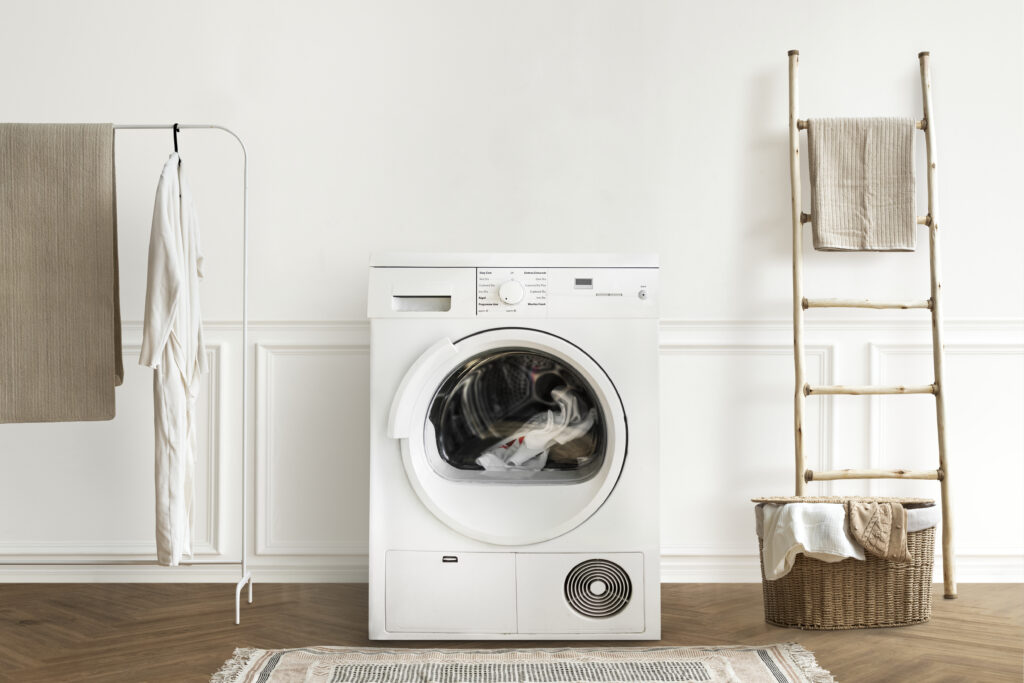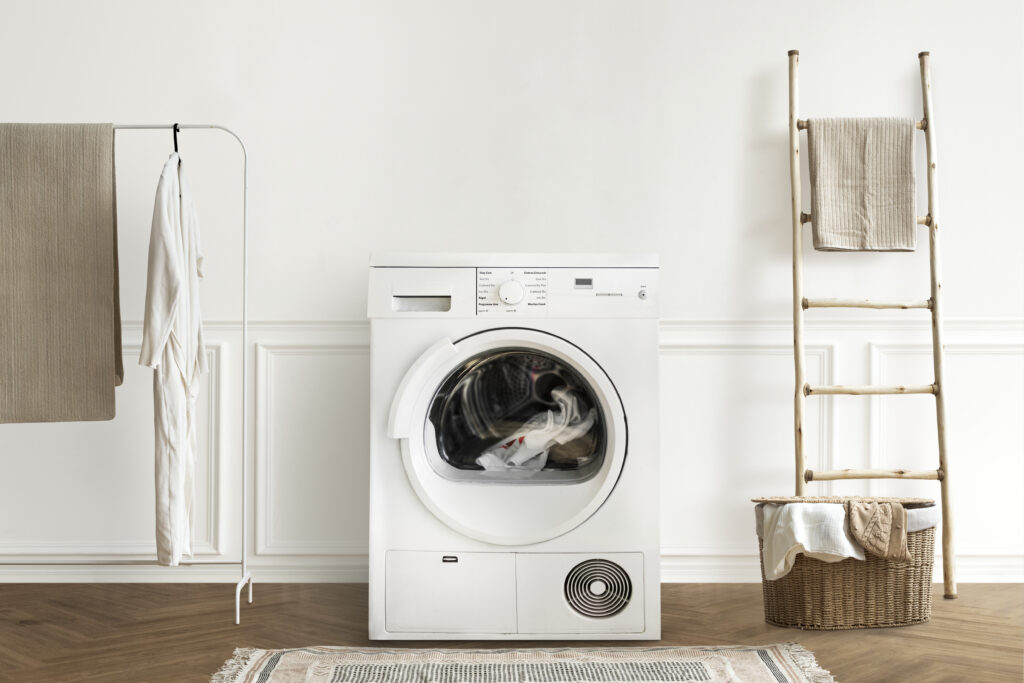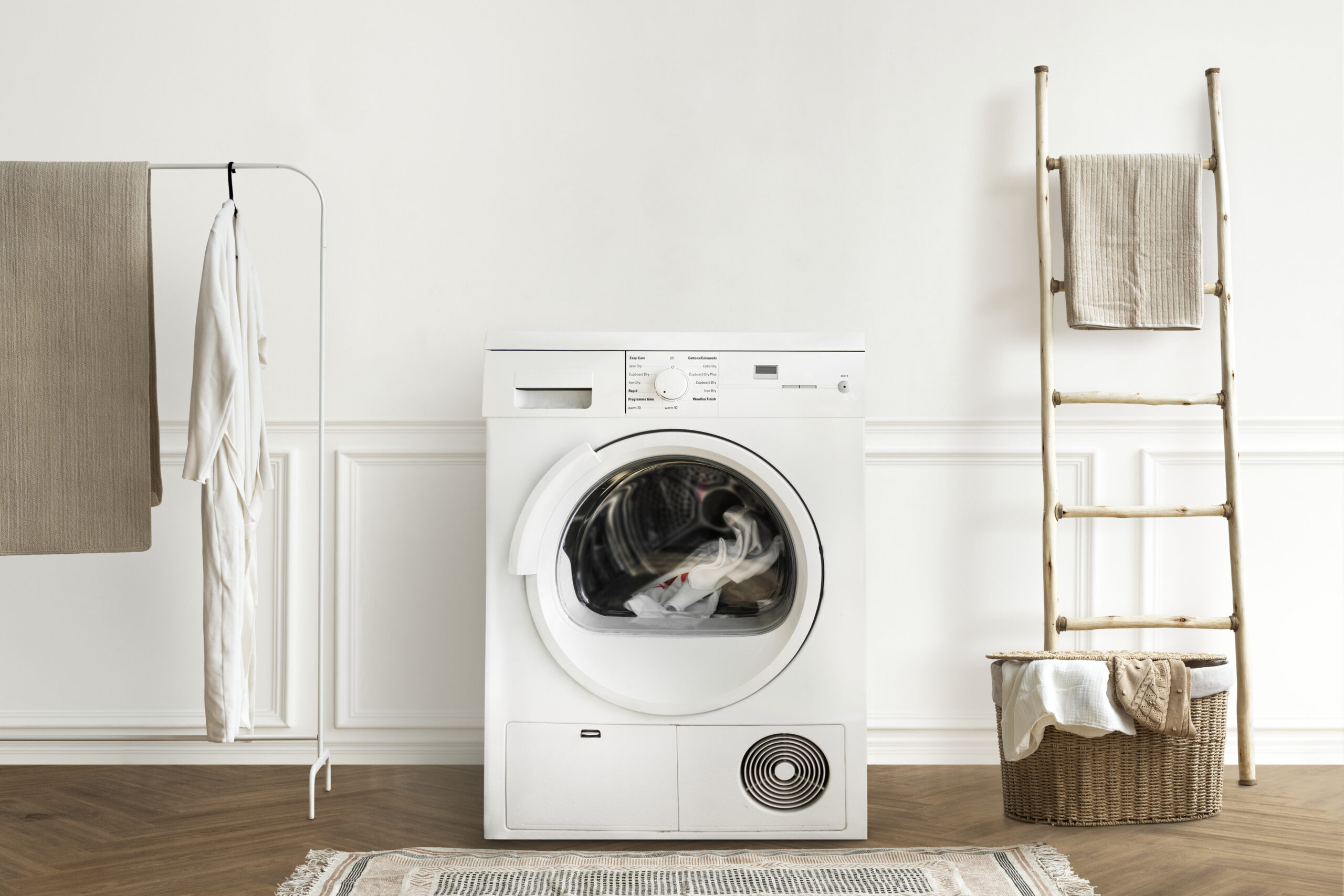A straightforward laundry day can become a household nightmare due to a washing machine that refuses to drain. In addition to being inconvenient, water pooling inside your washer drum can cause mold growth, musty smells, and water damage if ignored.
The good news? Generally speaking, you don’t have to call a technician straight away. You can frequently fix washing machine drain problems on your own with a few quick checks and simple fixes. We’ll go over common drain issues, how to troubleshoot them step-by-step, and when to call a professional in this 2025 guide.

Why Does Your Washing Machine Not Empty?
Plumbing and mechanical processes work together to drain washing machines. Water is pumped out through a drain pump, travels through a hose, and then leaves your house through the sink drain or standpipe.
Your washer won’t drain correctly if any component of this system becomes clogged, kinked, or malfunctions mechanically. Let’s dissect the most common offenders.
Typical Reasons for Drain Issues in Washing Machines
1.clogged drain hose
Coins, fabric, lint, and other small objects frequently become stuck in the drain hose, obstructing the flow of water.
2.Blocked Pump Filter
A pump filter found in the majority of contemporary washers is intended to capture debris before it reaches the drain pump. It can clog and prevent water from draining if not cleaned on a regular basis.
3.Bad Drain Pump
Over time, drain pumps deteriorate or become clogged by debris. Water cannot be effectively removed by a broken pump.
4.Bent or Kinked Drain Hose
Drainage may not be possible if the hose has a sharp bend or kink that stops water flow.
5.Blocked Standpipe or House Drain
Water can back up and flood the area if the standpipe where the washer drains is clogged.
6.A broken door switch or lid
If the door or lid is not closed all the way or if the switch is broken, the washing machine will not go into the spin/drain cycle.
7.The washer is overloaded
Overloading your washer can put stress on the drainage system and motor, resulting in subpar draining.

A Comprehensive Guide to Troubleshooting
Prioritize safety. To prevent electric shock when inspecting parts, unplug your washer from the electrical outlet.
Step 2: Look for Any Hose Kinks You Can See
Examine the rear drain hose after removing the washer a little. Verify that it is not crushed, twisted, or bent against the wall.
👉 Solution: Straighten the hose. Replace it with a new one if it’s broken or cracked.
Step 3: Empty the Water by Hand
If there is a lot of water in your machine:
Under the pump filter access panel, which is often located at the front-bottom of the machine, place towels and a shallow tray or bucket.
Open the filter cover slowly to allow water to escape.
Pro tip: Because it can get messy, keep extra towels close at hand.
Clean the pump filter in step four.
After draining, turn the pump filter counterclockwise to remove it and look for:
accumulation of lint
Hairpins, socks, buttons, or coins
Before putting it back in, give it a thorough cleaning with warm water and a soft brush.
Step 5: Examine and clean the drain hose
Remove the drain hose from the washer’s rear and:
Use a faucet or garden hose to run water through it.
To remove any obstructions, use a plumber’s snake or a flexible cleaning brush.
When clear, firmly reattach.
Step 6: Examine the Drain Pump
The pump might be broken if the problem continues even after cleaning the hose and filter.
When the machine tries to drain, listen for odd humming or grinding sounds.
Do It Yourself Test:
If you’re good with tools, use a multimeter to check the pump motor’s electrical continuity.
If the pump doesn’t spin freely or doesn’t pass the test, replace it.
Step 7: Examine the house drain and standpipe.
Using a bucket, pour water straight into the standpipe.
If it overflows or drains slowly, your home plumbing is the problem.
Fix: If it’s stubborn, call a licensed plumber or use a chemical drain cleaner or a plumber’s snake.
Step 8: Verify the operation of the lid/door switch
If modern washers believe the door or lid is open, they will not drain.
Close the door securely or manually press the switch to test it (a clicking sound may be audible).
Fix: Replace the switch if it’s broken; most models cost between $20 and $50.

When to Make a Professional Call
It’s best to contact an appliance repair technician if these actions don’t resolve the problem or if you observe these warning indicators:
Water seeping from the washer’s underside
Grinding sounds that are loud during the drain cycle
Digital display error codes such as OE, 5E, ND, or E2
Electrical tests on the control board or pump failed.
The average cost of repairs in the United States in 2025:
Replacement of a drain pump: $150–$350
Replacement of a hose costs $75 to $150.
Repairing a control board costs $200 to $400.
How to Avoid Drain Issues in the Future
It’s easier to prevent washer drain issues than to fix them. Here’s how:
Every month, clean your pump filter.
Regularly check hoses for kinks.
Don’t put too much strain on your machine.
Before each wash, empty your pockets.
Every month, run a cleaning cycle using vinegar or laundry detergent.
Hoses should be replaced every three to five years.

Concluding remarks
Although most washing machine drain problems are easy to diagnose and resolve at home, they can still be inconvenient. You now have a trustworthy 2025 guide to help you get your washer draining again, regardless of the cause—a kink in the drain line, a blocked pump filter, or a clogged hose.
You can prolong the life of your washing machine and avoid expensive repairs by taking good care of it and knowing when to hire a professional.
A Brief Review: Resolving Drain Problems
Verify and align the drain hoses. Drain the machine’s water manually ✅ Make sure the pump filter is clean. Make sure the drain hose is clear. Check the door switch and pump ✅ Examine the plumbing in your home.
Suggested Tools:
Adaptable drain brush
A multimeter
The snake of the plumber
Cleaning tablets for washing machines

Leave a Reply